Panasonic CF-51MCCDDBM, CF-51LCCDDBM, CF-51MCMDDBM User Manual

OPERATING INSTRUCTIONS
Personal Computer
Model No. CF-51 series
XP
[Additional Manual]
Reference Manual
This manual can be accessed on your computer.
Refer to “Reference Manual” on how to access the Reference Manual. (Î page 17)
Contents |
|
|
|
Getting Started |
|
|
|
|
Started |
||
First-time Operation ............................................... |
9 |
||
Read Me First ........................................................ |
3 |
|
|
Names and Functions of Parts .............................. |
7 |
|
|
|
|
Getting |
|
Operation |
|
|
|
|
|
||
|
|
||
Starting Up/Shutting Down .................................. |
13 |
Operation |
|
Touch Pad |
16 |
||
|
|||
Reference Manual ............................................... |
17 |
|
|
Useful Information................................................ |
18 |
|
|
Troubleshooting |
|
|
|
|
|
||
|
Troubleshooting |
||
List of Error Codes |
23 |
||
|
|||
Dealing with Problems (Summary) ...................... |
24 |
|
|
Reinstalling Software ........................................... |
28 |
|
|
Appendix |
|
|
|
|
|
||
|
|
||
LIMITED USE LICENSE AGREEMENT .............. |
30 |
|
|
Hard Disk Data Erase Utility ................................ |
31 |
Appendix |
|
Specifications |
32 |
||
|
|||
LIMITED WARRANTY ......................................... |
35 |
|
|
|
|
|
Please read these instructions carefully before using this product and save this manual for future use.
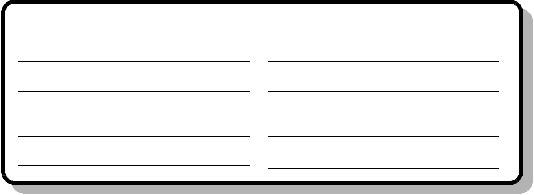
Customer’s Record
Model No.*1
Serial No.
or
Code No.
Date of Purchase
Dealer’s Name
Dealer’s Address
*1 For the Model No., insert the 12 digit number (for example, CF-51LCMDDBM) located on the bottom of the computer.
Introduction
Thank you for purchasing the Panasonic computer. Read the operating instructions thoroughly for proper operation of your new computer.
Illustrations and Terminology in this Manual
|
NOTE |
NOTE provides a useful fact or helpful information. |
||||
|
CAUTION |
CAUTION indicates a condition that may result in minor or moderate injury. |
||||
|
|
|
|
|
|
This illustration means to press the [Enter] key. |
|
Enter |
|||||
|
|
|
|
|
|
|
|
Fn |
+ |
F5 |
|
This illustration means to press and hold the [Fn] key, then press the [F5] key. |
|
|
[start] - [Run] |
This illustration means to click [start], then to click [Run]. For some applications, |
||||
|
|
|
|
|
|
you may need to double-click. |
|
Î or |
These symbols indicated related pages. |
||||
|
|
|
|
|
|
Î : Refer to the page in this Operating Instructions |
|
|
|
|
|
|
: Refer to the Reference Manual |
|
|
|
|
|
|
|
zSome of the illustrations in this manual may differ slightly in shape from the actual items in order to make the explanation easier to understand.
zIf the user has logged on without the administrator authority, some functions may not be executable, and some screens may be not displayed as shown in this manual.
If this happens, log on with the administrator authority to enable these functions.
zConfirm the latest information on optional products in catalogs, etc.
zIn this manual, “Microsoft® Windows® XP Professional Service Pack 2 with Advanced Security Technologies” is indicated as “Windows” or “Windows XP”.
zIn this manual, the following software packages are described as follows: “WinDVD™ 5 (OEM Version)” as “WinDVD”
“B’s Recorder GOLD7 BASIC” as “B’s Recorder” “B’s CLiP 6” as “B’s CLiP”
zThe following drives may be described as “CD/DVD drive”. DVD-ROM & CD-R/RW drive, DVD MULTI drive
zCircular media such as DVD-ROM and CD-ROM are described as “discs”.
Copyright
This manual is copyrighted by Matsushita Electric Industrial Co., Ltd. with all rights reserved. No part of this manual may be reproduced in any form without the prior written permission of Matsushita Electric Industrial Co., Ltd.
No patent liability is assumed with respect to the use of the information contained herein. © 2005 Matsushita Electric Industrial Co., Ltd. All Rights Reserved.
Disclaimer
Computer specifications and manuals are subject to change without notice. Matsushita Electric Industrial Co., Ltd. assumes no liability for damage incurred directly or indirectly from errors, omissions or discrepancies between the computer and the manuals.
Trademarks
Microsoft®, Windows® and the Windows logo are registered trademarks of Microsoft Corporation of the United States and/or other countries.
PS/2® is a registered trademark of International Business Machines Corporation.
Intel, Pentium and PROSet are either registered trademarks or trademarks of Intel Corporation.
Adobe, the Adobe logo and Adobe Reader are either registered trademarks or trademarks of Adobe Systems Incorporated in the United States and/or other countries.
WinDVD™ is a trademark of InterVideo, Inc.
Panasonic is a registered trademark of Matsushita Electric Industrial Co., Ltd.
Names of products, brands, etc., appearing in this manual are trademarks or registered trademarks of their respective own companies.
2
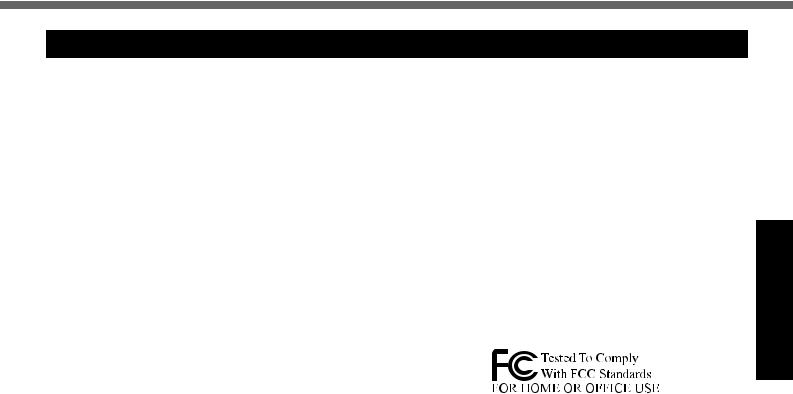
Read Me First
For U.S.A.
Federal Communications Commission Radio Frequency Interference Statement
Note: This equipment has been tested and found to comply with the limits for a Class B digital device, pursuant to Part 15 of the FCC Rules. These limits are designed to provide reasonable protection against harmful interference in a residential installation. This equipment generates, uses and can radiate radio frequency energy and, if not installed and used in accordance with the instructions, may cause harmful interference to radio communications. However, there is no guarantee that interference will not occur in a particular installation. If this equipment does cause harmful interference to radio or television reception, which can be determined by turning the equipment off and on, the user is encouraged to try to correct the interference by one or more of the following measures:
zReorient or relocate the receiving antenna.
zIncrease the separation between the equipment and receiver.
zConnect the equipment into an outlet on a circuit different from that to which the receiver is connected.
zConsult the Panasonic Service Center or an experienced radio/TV technician for help.
Warning
To assure continued compliance, use only shielded interface cables when connecting to a computer or peripheral. Also, any changes or modifications not expressly approved by the party responsible for compliance could void the user’s authority to operate this equipment.
This device complies with Part 15 of the FCC Rules. Operation is subject to the following two conditions: (1)This device may not cause harmful interference, and (2)This device must accept any interference received,
including interference that may cause undesired operation.
FCC RF Exposure Warning:
zThis computer is provided with a PC Card slot that could be used with wireless transmitter(s), which will be specifically recommended, when they become available. Other third-party wireless transmitter(s) have not been RF exposure evaluated for use with this computer and may not comply with FCC RF exposure
requirements.
<Only for models with wireless LAN>
zThis equipment complies with FCC radiation exposure limits set forth for an uncontrolled environment.
zThis equipment must be installed and operated in accordance with provided instructions and minimum 1.5 cm spacing must be provided between antenna and all person’s body (excluding extremities of hands, wrist and feet) during wireless modes of operation.
zThis transmitter must not be co-located or operated in conjunction with any other antenna or transmitter.
<Only for models with wireless LAN>
This product is restricted to indoor use due to its operation in the 5.15 to 5.25 GHz frequency range.
FCC requires this product to be used indoors for the frequency range 5.15 to 5.25 GHz to reduce the potential for harmful interference to co-channel Mobile Satellite systems.
High power radars are allocated as primary users of the 5.25 to 5.35 GHz and 5.65 to 5.85 GHz bands. These radar stations can cause interference with and /or damage this product.
Responsible Party:
Panasonic Corporation of North America
One Panasonic Way Secaucus, NJ 07094
Tel No:1-800-LAPTOP5 (1-800-527-8675)
FCC Regulation Notice for modem
This equipment contains a FCC approved modem.
1.This equipment complies with CFR47 Part 68 rules. On the computer is a label that contains, among other information, the FCC registration number and ringer equivalence number (REN) for this equipment. If required, this information must be provided to the telephone company.
2.An FCC compliant telephone cord and modular plug is provided with this equipment. This equipment is designed to be connected to the telephone network or premises wiring using a compatible modular jack which is Part 68 compliant. See Installation Instructions for details.
3.The REN is used to determine the quantity of devices which may be connected to the telephone line. Excessive RENs on the telephone line may result in the devices not ringing in response to an incoming call. In most, but not all area, the sum of RENs should not exceed five (5.0). To be certain of the number of devices that may be connected to a line, as determined by the total RENs, contact the local telephone company.
4.If your telephone equipment cause harm to the telephone network, the telephone company will notify you in advice that temporary discontinuance of service may be required. But if advice notice isn’t practical, the telephone company will notify the customer as soon as possible. Also, you will be advised of your right to file a complaint with the FCC if you believe it is necessary.
5.The telephone company may take changes in its facilities, equipment, operations or procedures that could affect the operation of the equipment. If this happens the telephone company will provide advance notice in order for you to make necessary modifications to maintain uninterrupted service.
6.If trouble is experienced with this equipment, for repair or warranty information, please contact Panasonic
Getting Started
3

Read Me First
Getting Started
Corporation of North America at DIAL TOLL FREE 1- 800-LAPTOP5 (1-800-527-8675). If the equipment is causing harm to the telephone network, the telephone company may request that you disconnect the equipment until the problem is resolved.
7.There are no user serviceable parts contained in this equipment.
8.This equipment may not be used on coin service provided by the telephone company. Connection to party lines is subject to state tariffs.
9.The Telephone Consumer Protection Act of 1991 makes it unlawful for any person to use a computer or other electronic device to send any message via a telephone fax machine unless such message clearly contains in a margin at the top or bottom of each transmitted page or on the first page of the transmission, the date and time it is sent and an identification of the business or other entry, or other individual sending the message and the telephone number of the sending machine or such business, other entity, or individual. In order to program this information into your fax soft-
ware, you should refer to the manual of the Fax software being used.
10.According to the FCC’s electrical safety advisory, we recommend that you may install an AC surge arrestor in the AC outlet to which this equipment is connected. Telephone companies report that electrical surges, typically lightning transients, are very destructive to customer terminal equipment connected to AC power sources and that this is a major nationwide problem.
“Caution: To reduce the risk of fire, use only No.26 AWG or larger telecommunication line cord.”
“ATTENTION: Pour réduire le risque d’incendie, utiliser uniquement des conducteurs de télécommunications 26 AWG ou de section supérieure.”
Notice for the products using LCD
This product uses one or more fluorescent lamps containing a small amount of mercury. It also contains lead in some components. Disposal of these materials may be regulated in your community due to environmental considerations. For disposal or recycling information please contact your local authorities, or the Electronics Industries Alliance: <http://www.eiae.org/>
Important Safety Instructions
When using your telephone equipment, basic safety precautions should always be followed to reduce the risk of fire, electric shock and injury to persons, including the following:
1.Do not use this product near water, for example, near a bath tub, washbowl, kitchen sink or laundry tub, in a wet basement or near a swimming pool.
2.Avoid using a telephone (other than a cordless type) during an electrical storm. There may be a remote risk of electric shock from lightning.
3.Do not use the telephone to report a gas leak in the vicinity of the leak.
4.Use only the power cord and batteries indicated in this manual. Do not dispose of batteries in a fire. They may explode. Check with local codes for possible special disposal instructions.
SAVE THESE INSTRUCTIONS
Information to the User
<Only for models with wireless LAN>
This product and your Health
This product, like other radio devices, emits radio frequency electromagnetic energy. The level of energy emitted by this product however is far much less than the electromagnetic energy emitted by wireless devices like for example mobile phones.
Because this product operates within the guidelines found in radio frequency safety standards and recommendations, we believe this product is safe for use by consumers. These standards and recommendations reflect the consensus of the scientific community and result from deliberations of panels and committees of scientists who continually review and interpret the extensive research literature.
In some situations or environments, the use of this product may be restricted by the proprietor of the building or responsible representatives of the organization. These situations may for example include:
zUsing this product on board of airplanes, or
zIn any other environment where the risk of interference to other devices or services is perceived or identified as
harmful.
If you are uncertain of the policy that applies on the use of wireless devices in a specific organization or environment (e.g. airports), you are encouraged to ask for authorization to use this product prior to turning on the product.
Regulatory Information
We are not responsible for any radio or television interference caused by unauthorized modification of this product. The correction of interference caused by such unauthorized modification will be the responsibility of the user. We and its
4
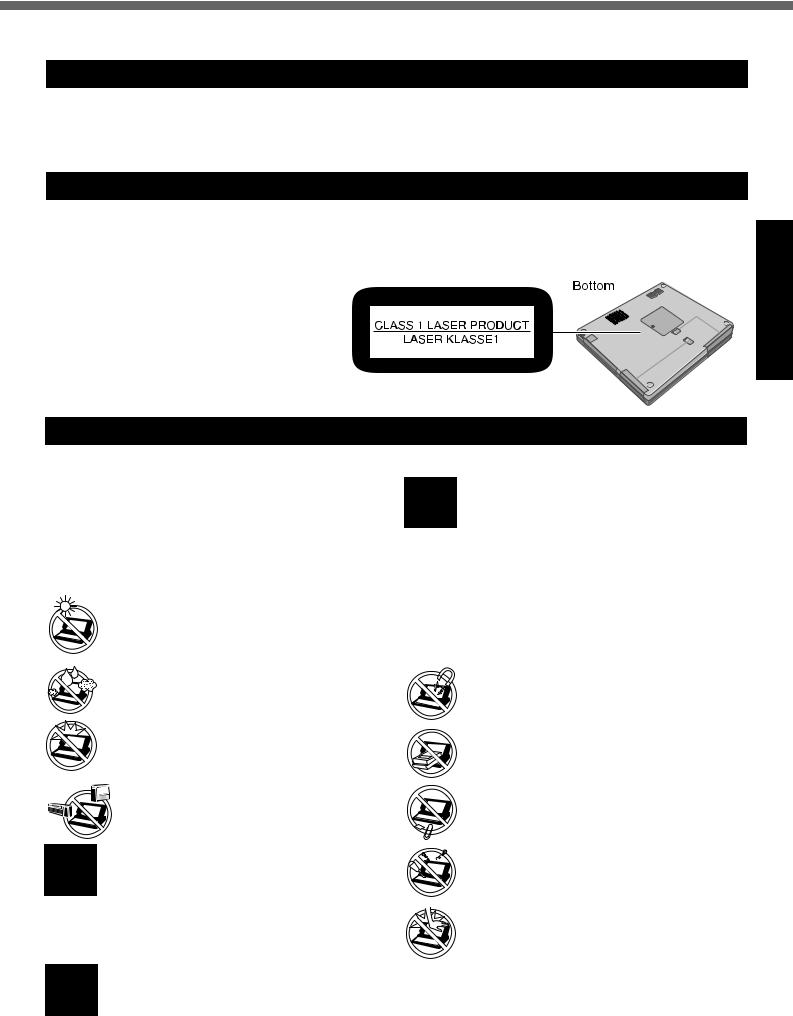
authorized resellers or distributors are not liable for damage or violation of government regulations that may arise from failing to comply with these guidelines.
Lithium Battery
Lithium Battery!
This computer contains a lithium battery to enable the date, time, and other data to be stored. The battery should only be exchanged by authorized service personnel.
Warning! A risk of explosion from incorrect installation or misapplication may possibly occur.
CD/DVD Drive Caution
CAUTION!
THIS PRODUCT UTILIZES A LASER.
USE OF CONTROLS, ADJUSTMENTS OR PERFORMANCE OF PROCEDURES OTHER THAN THOSE SPECIFIED HEREIN MAY RESULT IN HAZARDOUS RADIATION EXPOSURE.
DO NOT OPEN COVERS AND DO NOT REPAIR YOURSELF.
REFER SERVICING TO QUALIFIED PERSONNEL.
Getting Started
Precautions
Usage
Avoid Extreme Heat and Cold
Do not store or use the computer in locations exposed to heat, direct sunlight, or extreme cold.
Avoid moving the computer between locations with large temperature difference. Operation: 5 °C to 35 °C {41 °F to 95 °F} Storage: -20 °C to 60 °C {-4 °F to 140 °F}
Avoid Direct Sunlight on the LCD Panel
The LCD panel should not be exposed to direct sunlight or ultraviolet light.
Do not connect a telephone line, or a network cable other than the one specified, into the LAN port
If the LAN port is connected to a network such as the ones listed below, a fire or electric shock may result.
•Networks other than 1000BASE-T, 100BASETX or 10BASE-T
•Phone lines (Telephone lines, internal phone lines (on-premise switches), digital public phones, etc.)
Avoid Humidity, Liquids and Dust |
Handling |
Do not store or use the computer in locations |
Avoid Magnetic Fields |
exposed to high humidity, liquids (including |
Keep the computer away from magnets. |
rain) or dust. |
Data stored on the hard disk may be lost. |
Prevent Shock |
Avoid Stacking |
Avoid subjecting the computer to severe |
Do not place heavy objects on top of the com- |
vibrations or impact. Do not place the com- |
puter. |
puter inside a car trunk. |
Keep Small Objects Away |
|
Avoid Radio Frequency Interference
Do not place the computer near a television or radio receiver.
Avoiding low-temperature burns
Avoid more than casual contact with any heat producing area of the notebook computer, AC adaptor, and any option or accessory you use with it. Even low heat, if warmer than body temperature, can cause a burn, if the skin is exposed to the heat source for a long enough period of time.
Do not touch the computer and cable when it starts thundering
Do not insert paper clips or other small objects into the computer.
Do Not Disassemble the Computer
Do not attempt to disassemble your computer.
Avoid Excessive Force on the Display
Do not apply excessive downward force on the display when it is completely opened, especially when plugs and/or cables are connected to the rear of the computer.
5

Read Me First
Getting Started
Precautions (Battery Pack)
z Care should be exercised with regard to the following in order to avoid the possibility of overheating, fire or damage.
Avoid Heat
Do not throw the battery pack into a fire or expose it to excessive heat.
Keep Articles Away
Do not place the battery pack together with articles such as necklaces or hairpins when carrying or storing.
Do Not Disassemble


 Do not insert sharp objects into the battery
Do not insert sharp objects into the battery 
 pack, expose it to bumps or shocks, deform, disassemble, or modify it.
pack, expose it to bumps or shocks, deform, disassemble, or modify it.
Do Not Short
Do not short the positive (+) and negative (-) contacts.
Avoid Extreme Heat, Cold and Direct Sunlight
Do not charge, use or leave the battery pack for extended periods where it will be exposed to direct sunlight, in a hot place (in a car on a sunny day, for example), or in a cold place.
Do Not Use With Any Other Computer
The battery pack is rechargeable and was intended for the specified computer. Do not use it with a computer other than the one for which it was designed.
Do not use this computer with a battery pack other than the one specified (the one included with the computer or the specified battery pack sold separately)
Do Not Put into a Microwave
Do not put the battery pack into a microwave oven or a pressurized chamber.
Stop Using
Should the battery emit an abnormal odor, become hot to the touch, become discolored, change shape, or become in any way different from normal, remove it from the computer and stop using it.
zDo not touch the terminals on the battery pack. The battery pack may no longer function properly if the contacts are dirty or damaged.
zDo not expose the battery pack to water, or allow it to become wet.
zIf the battery pack will not be used for a long period of time (a month or more), charge or discharge (use) the battery pack until the remaining battery level becomes 30% to 40% and store it in a cool, dry place.
zThis computer prevents overcharging of the battery by recharging only when the remaining power is less than approx. 95% of capacity.
zThe battery pack is not charged when the computer is first purchased. Be sure to charge it before using it for the first time. When the AC adaptor is connected to the computer, charging begins automatically.
zShould the battery leak and the fluid get into your eyes, do not rub your eyes. Immediately flush your eyes with clear water and see a doctor for medical treatment as soon as possible.
 NOTE
NOTE 
zThe battery pack may become warm during recharging or normal use. This is completely normal.
zRecharging will not commence if internal tempera-
ture of the battery pack is outside of the allowable
temperature range (0 °C to 50 °C {32°F to 122°F}) ( Reference Manual “Battery Power”). Once the allowable range requirement is satisfied, charging begins automatically. Note that the recharging time varies based on the usage conditions.
(Recharging takes longer than usual when the temperature is 10 °C {50°F} or below.)
zIf the temperature is low, the operating time is shortened. Only use the computer within the allowable temperature range.
zThe battery pack is a consumable item. If the amount of time the computer can be run by using a particular battery pack becomes dramatically shorter and repeated recharging does not restore its performance, the battery pack should be replaced with a new one.
zWhen transporting a spare battery inside a package, briefcase, etc., it is recommended that it be placed in a plastic bag so that its contacts are protected.
zAlways power off the computer when it is not in use. Leaving the computer on when the AC adaptor is not connected will exhaust the remaining battery capacity.
6
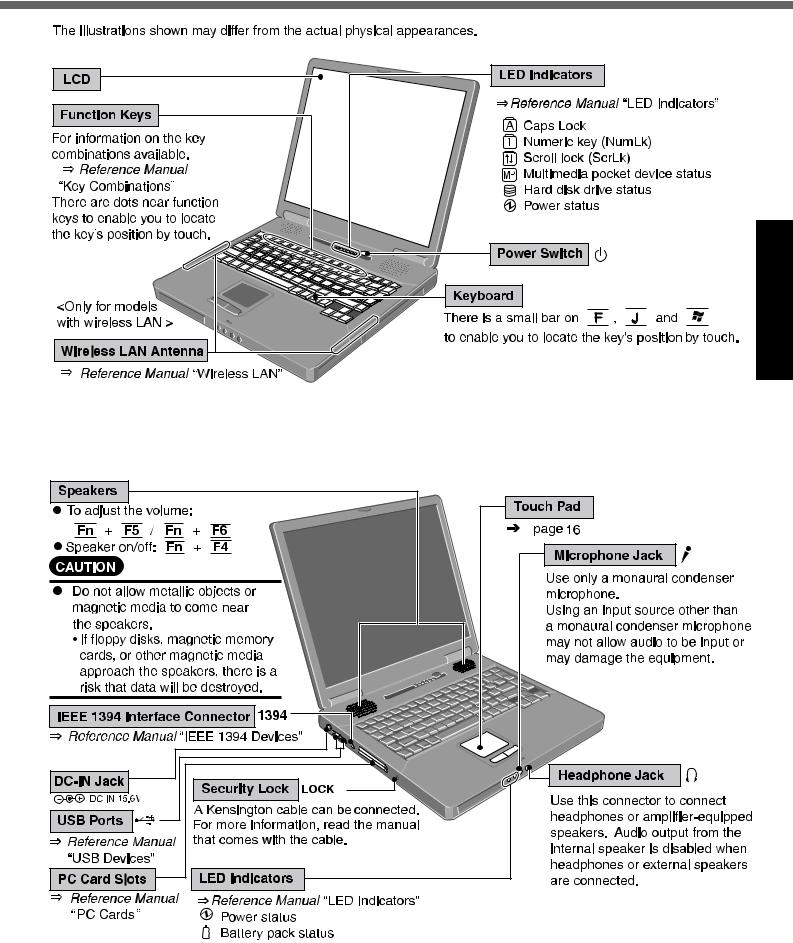
Names and Functions of Parts
Getting Started
7
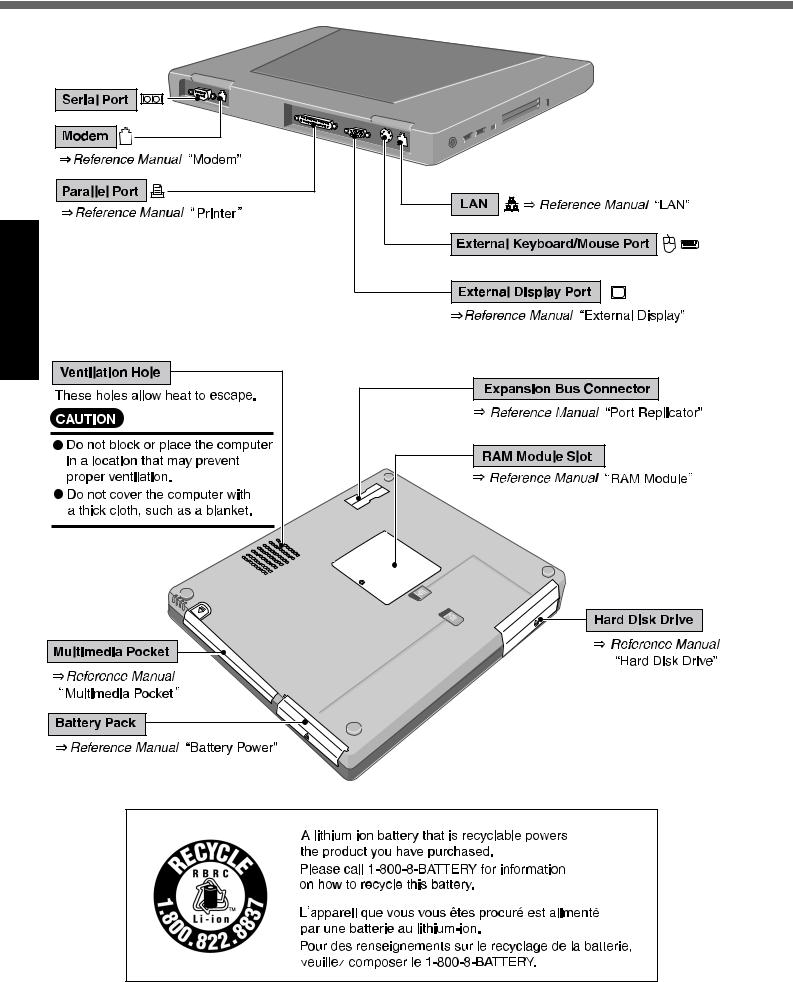
Names and Functions of Parts
Getting Started
8

First-time Operation
Read the steps below to help you learn what parts are included, and to gain an understanding of some basic computer-related operations.
1 Confirm the inclusion of all parts.
Make sure the parts shown in the figure have been supplied. If any of these items are missing or is not working properly, contact Panasonic Technical Support. (Î page 35)
AC adaptor . . . . . . . 1 AC Cord . . . . . . . . . . .1 Battery Pack . . . . . . . 1
Model No : CF-AA1653A |
Model No : CF-VZSU29 |
||
Product Recovery DVD-ROM |
Modem Telephone Cable |
Operating Instruc- |
|
. . . . . . . . . . . . . . . . . . 1 |
. . . . . . . . . . . . . . . . . .1 |
tions (This book) . . . |
1 |
|
|
Windows® Book |
|
|
|
. . . . . . . . . . . . . . . . . . |
1 |
zWhen reinstalling B's Recorder/B's CLiP with Product Recovery DVDROM, the serial number is required. Take care not to lose the serial number marked on the sticker.
2 Read the LIMITED USE LICENSE AGREEMENT. (Î page 30)
Be sure to read the LIMITED USE LICENSE AGREEMENT before breaking the seal on the computer’s packaging.
3 Insert the battery pack.
ATurn your computer over and remove the cover (A).
Slide and remove the cover without releasing the mark  (B).
(B).
BInsert the battery pack (C).
Firmly attach the pack to the connector.
z If the battery pack should be removed from the computer, slide the
latch (D), and then without releasing it, pull the tab (E) on the battery pack. ( Reference Manual “Battery Power”)
CSlide the cover back into place.
Be sure the tab does not get caught when closing the cover.
CAUTION
zFor an improperly attached cover, your battery pack may fall out while you are carrying around your computer.
zDo not touch the terminals on the battery pack and the computer. The battery pack may no longer function properly if the contacts are dirty or damaged. Also, the computer may not operate properly.
Getting Started
4 Connect your computer to a power outlet.
The battery pack will be charged automatically. Charging Time: Approx. 4 hours
(Varies depending on the usage conditions.)
9

First-time Operation
Getting Started
CAUTION
zBe sure the AC adaptor is connected until completing the first-time use operation.
zWhen using the computer for the first time, do not connect any peripheral device except the battery pack and AC adaptor to the computer.
Handling the AC adaptor
zDo not twist or pull the AC power cord forcefully. Doing so may damage the connections.
zUse only the specified AC adaptor with your computer. Using an AC adaptor other than the one supplied might damage the battery and/or the computer.
zWhen the DC plug is not connected to the computer, disconnect the AC cord from your AC wall outlet.
zProblems such as sudden voltage drops may arise during periods of thunder and lightning. Since this could adversely affect your computer, an uninterruptible power source (UPS) is highly recommended unless running from the battery pack alone.
5 Open the display.
ASlide the latch located at the front.
BLift open the display.
6 Turn your computer on.
Press the power switch  and hold it for approximately one second until the power indicator
and hold it for approximately one second until the power indicator  turns on before releasing it.
turns on before releasing it.
zDo not press the power switch repeatedly.
zOnce the computer is powered off, you must wait at least ten seconds before powering it on again.
7 Setup Windows.
Moving the cursor  or clicking buttons can be performed with the touch pad. (Î page 16)
or clicking buttons can be performed with the touch pad. (Î page 16)
zDo not press any key or move the touch pad until [Windows XP Professional Setup] is displayed.
AAt [Welcome to the Windows XP Setup Wizard], select [Next].
BAfter reading the agreement, select [I accept this agreement] or [I don’t
accept this agreement], then select [Next].
z If [I don’t accept this agreement] is selected, the Windows setup will be aborted.
CSelect settings for your region, then select [Next].
DEnter your name and organization and then select [Next].
EEnter your computer name and administrator password and then select
[Next].
z Remember this password! If the password is forgotten, Windows cannot be operated.
FEnter the correct date, time and the time zone, then select [Next].
The computer will restart.
z It may take some time before the computer restarts and the screen of step i is displayed. Wait, and do not press any keys, or touch the
touch pad, etc.
GEnter your administrator password and select  .
.
z When Windows setup is completed, the following message will be displayed at the bottom right of the screen: “Your computer might be at risk.” Continue to the next step.
The message is generated by the [Security Center] function in [Control
10
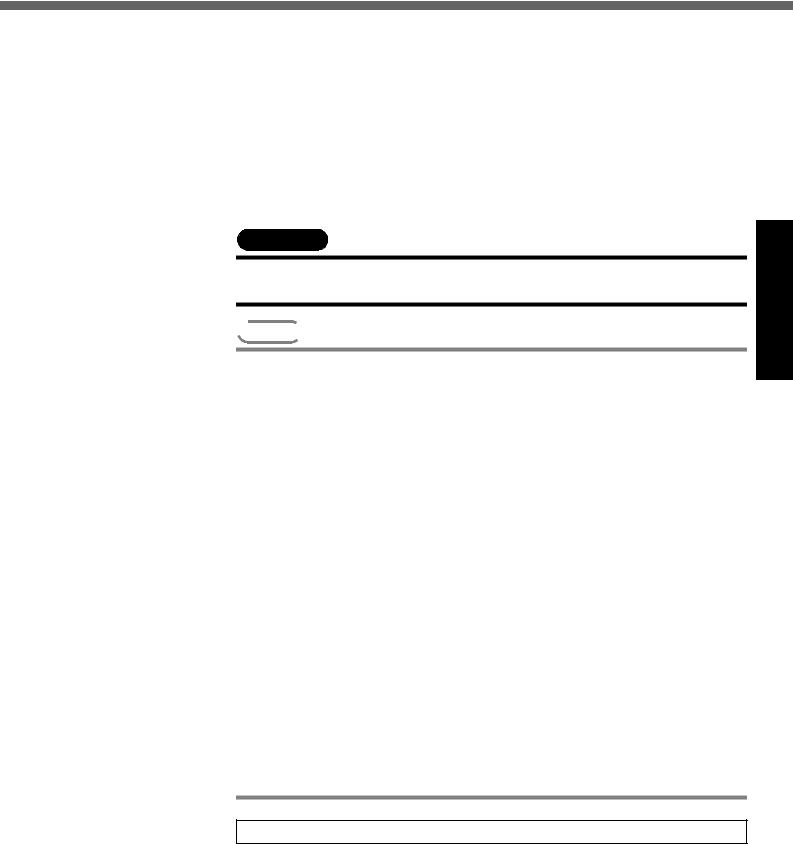
Panel], and does not indicate an error or malfunction. For more information about [Security Center]: Î page 19.
8 Create a new account.
ASelect [start] - [Control Panel] - [User Accounts] - [Create a new account].
BEnter a new name for the new account, then select [Next].
CSelect [Computer administrator], then select [Create Account].
D<When you want to create a password for the new account>
Select the new account you have created and select [Create a password]. Follow the instructions on the screen to create a password.
ESelect [start] - [Turn Off Computer] - [Restart] to restart the computer.
CAUTION
zRemember this password! If the password is forgotten, Windows cannot be operated. You can create a password reset disk beforehand (Î page 12).
 NOTE
NOTE 
zWhen creating a new user account:
•If you make mail settings, create password reset disks (Î page 12), or conduct other related operations before creating the user account, you will be unable to use any previous mail history or settings.
•When you create the first new account, you can only select [Computer administrator].
Once a “Computer Administrator” account has been created, you can create additional limited user accounts.
Note also that only the added user account will be displayed in the Welcome screen. The account for the administrator created during Windows setup will not be displayed.
zThe message “Your computer might be at risk,” which is displayed at the bottom right of the screen, is generated by the “Security Center” function in Windows XP, and does not indicate an error or malfunction.
To prevent this message from being displayed, refer to “Security of the Computer” (Î page 19).
zAbout the Icon Enlarger:
•If the characters or icons on the screen are too small and difficult to see, after completing step 8, select [start] - [All Programs] - [Panasonic] - [Icon Enlarger].
This will allow you to magnify the display of characters and icons on the screen.
•The [Icon Enlarger] can be set separately for each account.
zYou can also use [Loupe Utility], which enlarges a part of the screen. ( Reference Manual “Loupe Utility”)
z<Only for models with wireless LAN>
If you use the wireless LAN, be sure to refer to the Reference Manual’s “Wireless LAN”.
This concludes the first-time use operation guidelines.
Getting Started
11
